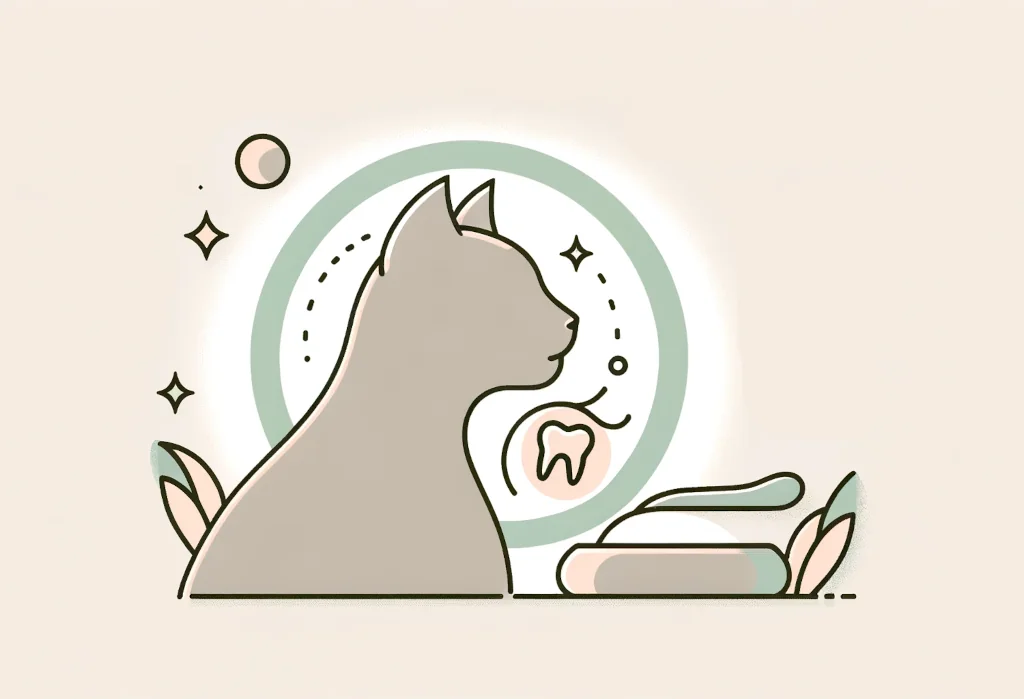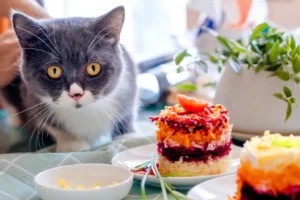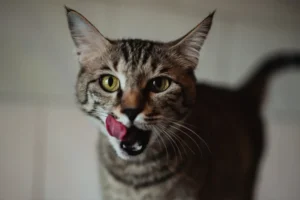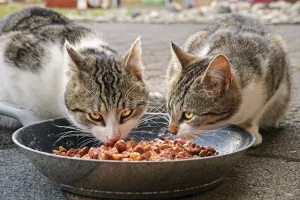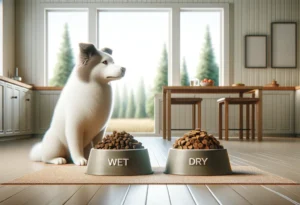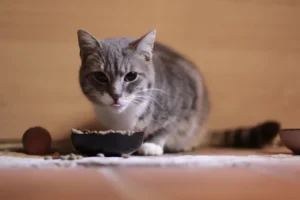When your purring pal’s pearly whites aren’t quite up to scratch, dinner time can turn into a real cat-astrophe. But navigating the menu for a feline with dental woes doesn’t have to mean a whisker-licking defeat.
In this post, you’ll find compassionate and practical advice tailored to keep your kitty chowing down happily, even with a tender set of chompers.
Key takeaways:
- For cats with dental issues, offer soft or moistened foods to ease discomfort during meals.
- Treat your cat with dental-friendly options like soft treats or wet food shaped into small, manageable portions.
- Regular veterinary check-ups are essential to monitor and maintain your cat’s dental health while adjusting their diet as needed.
What’s Going on in Your Cat’s Mouth?
When it comes to dental issues in felines, a few common culprits pop up.
Periodontal disease is the heavy hitter here. It’s a sneaky progression where plaque and tartar build up and lead to inflamed and infected gums. If left unchecked, it can wreak havoc on the structures supporting the teeth, sometimes leading to tooth loss. Another scoundrel is tooth resorption, akin to a thief in the night, eroding the tooth from the inside out or even at the gumline, resulting in painful lesions.
And let’s not forget gingivitis, which is like the red flag waving at the start of gum problems. Your cat’s gums may look redder than a ripe tomato and might bleed more easily than you’d expect.
Keep an eye out for signs your kitty might be experiencing dental distress, like reluctance to eat, preferring softer foods, or dropping kibble from their mouth. You might also notice them pawing at their face or becoming grouchy when you just thought they’re channeling their inner grumpy cat. These subtle hints suggest it might be time to chat with your vet.
How Can You Make Mealtime Comfortable for Your Cat?
Creating a stress-free chow zone could quell your kitty’s mealtime anxiety. Start by serving meals in a quiet area where they feel safe and can eat without any interruption from those pesky doorbells or other household pets.
For those kibble enthusiasts with a tender mouth, try softening dry food with some warm water or unsalted chicken broth — it’s like turning that crunchy granola into silky oatmeal. On the flip side, if you’re transitioning to wet food, it’s the culinary equivalent of switching from jerky to pâté, much gentler on the sore gums.
And don’t forget the power of warmth — heating up their meals is like the aroma of freshly baked cookies; it makes the food smell irresistible, enhancing the flavor for your furball’s discerning palate.
Related: Top food safety tips for cat owners
What Foods Are Best for Cats with Dental Problems?
When it comes to the crème de la crème of cat cuisine for those with dental woes, you’ll want to navigate towards the softer side of the menu. Cat foods with mousse-like textures or those labeled as “pâté” can be particularly soothing for a sore mouth. They’re like the mashed potatoes of the cat food world.
Veterinary-prescribed therapeutic diets provide tailored nutrition and are specially formulated, often taking the form of soft kibbles that dissolve easily or wet foods that slide down without a hitch. These diets sometimes include additives that help control plaque and tartar – it’s as if the food itself is lending a hand in dental care.
Bypass the crunchy, hard snacks that could make your kitty wince in pain. Instead, opt for moist treats or those specifically designed for oral health, which may be easier on their teeth and gums. But here’s something you probably haven’t thought of: try offering a frozen blueberry or two as a treat. This unique tidbit can be soothing on the gums due to its cold temperature while being soft enough to avoid causing pain.
Remember, your furry friend’s palate might be picky, especially when they’re feeling under the weather. A little trial and error will go a long way in finding the purr-fect dish that whisks their whiskers. Keep tabs on their eating habits and consult with your vet regularly to ensure their diet meets their dental and overall health needs. After all, a happy cat is one that eats well, sans the dental drama.
Check out the American Veterinary Medical Association’s guidelines for more details on dental care to keep your cat’s chompers in check!
Can You Still Give Treats to a Cat with Dental Issues?
When your feline friend has dental issues, the type of treats you give them needs a second look. Here’s the drill: you want to pick treats that won’t make their dental problems worse.
For starters, soft treats are the way to go. These are gentler on sore gums and make it easier for your kitty to enjoy a tasty nibble without discomfort. Now, when we say treats, we mean it – these should be doled out sparingly. The last thing you want is for your cat to pack on the pounds or for those dental issues to go from bad to worse.
So, what kind of soft treats are we talking about? You’ve got options like:
- Soft, chewy cat treats available at pet stores
- A bit of wet food shaped into small balls
- Small pieces of cooked fish or meat (make sure there are no bones!)
- Pureed treats, which can be licked rather than chewed
Remember, while treats are great for bonding and for giving your kitty a little moment of joy, they should never make up more than 10% of their daily caloric intake. Keeping an eye on this will ensure you’re not inadvertently contributing to any future dental distress or putting extra strain on their waistline.
Related: How Often and How Much Should You Feed Your Cat?
How Often Should You Feed Your Cat with Dental Issues?
Let’s talk chow time for your tooth-troubled tabby. Feeding frequency and portion control can make a world of difference for cats with dental problems. Smaller, more frequent meals can be a real lifesaver—they’re easier on the mouth and keep your cat from becoming overwhelmed by a big plate of food.
Here’s a feeding schedule you might consider for a cat with dental issues:
- Divide the daily food into 4-6 small meals
- Monitor closely to ensure they’re eating each meal completely
- Adjust portions based on your cat’s appetite and weight management needs
It’s like serving up appetizer-sized meals throughout the day, which can also prevent your furry pal from gobbling up their food too quickly—something that’s definitely not great for cats with sore chompers.
Ensure you’re keeping tabs on their intake. Your best friend might be a tad too stoic for their own good, powering through the pain to eat, so it’s your job to make sure they’re not eating too little because it hurts. It might help to track their eating habits in a journal or an app, keeping a daily log of how much they’ve eaten and their reaction during mealtimes.
Here’s a tip that’s often overlooked: the food’s temperature can make a big difference. Room-temperature vittles or slightly warmed dishes can be more palatable and comfortable for a cat with dental issues than cold food straight from the fridge. Plus, warming up the food can release aromas that entice your cat to eat, even when they’re feeling a little off.
Whether they’re sitting down to a gourmet wet food feast or just some kibble softened with water, the key is to ensure they’re comfortable during mealtime—and that they’re getting the necessary nutrients to not just live, but thrive. By staying attuned to your cat’s needs and making mealtime a stress-free experience, you’re setting the stage for healthier eating habits, and ultimately, a happier, healthier kitty.
Alex, a passionate animal lover, has experience in training and understanding animal behavior. As a proud pet parent to two dogs and three cats, he founded AnimalReport.net to share insights from animal experts and expand his knowledge of the animal kingdom.

